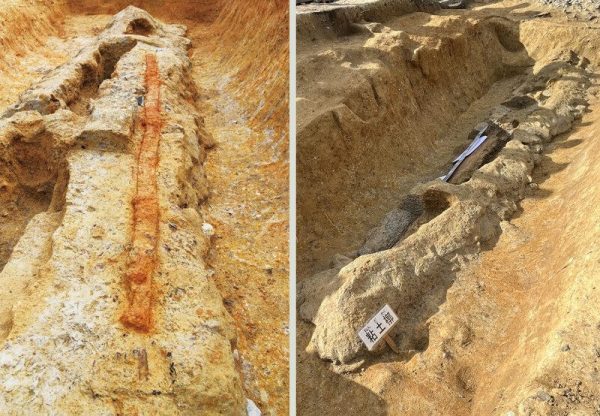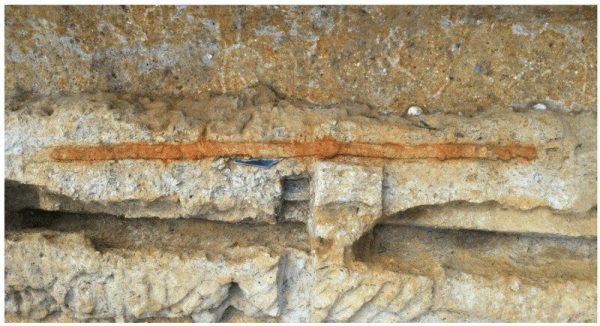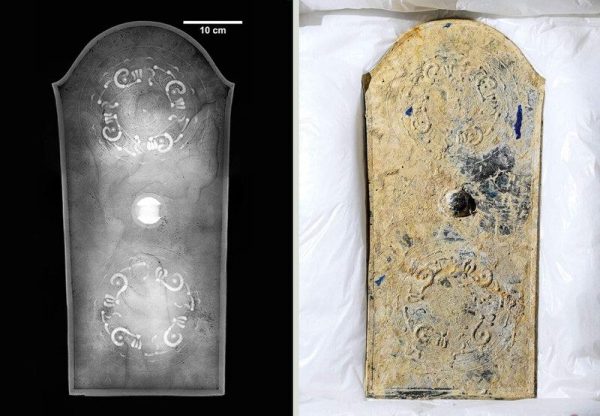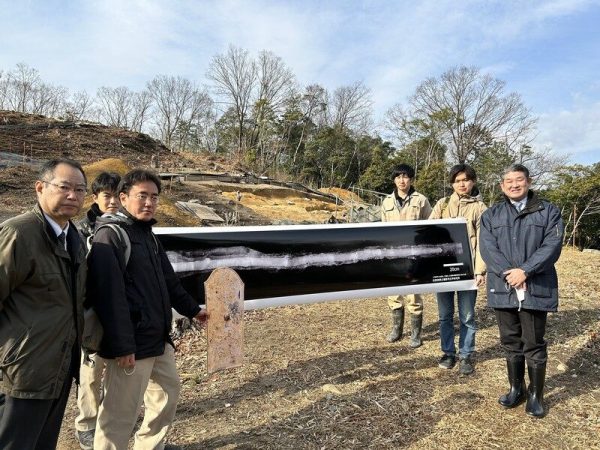The discovery of a massive 2.3-meter-long dakoken sword in the Tomiomaruyama burial mound in Nara City, Japan, has brought to light an unprecedented archaeological find.

The burial mound, dating back to the 4th century AD during the Kofun Period (AD 300 to 538), has been a rich source of historical artifacts, and recent excavations have uncovered remarkable items.
The Tomiomaruyama burial mound, with a diameter of 86 meters and a height of 10 meters, has previously yielded farming tools, utensils, cylindrical copperware, bronze ware, and decorated mirrors featuring god and animal motifs.
Among the latest discoveries is a giant dakoken sword made from iron, measuring 2.3 meters in length. The sword has a slightly bent blade resembling that of a snake, a characteristic feature of koken swords associated with the worship of snake deities.

This particular sword is the largest intact example of its kind ever discovered in Japan, and experts suggest that it likely served a ceremonial purpose, possibly as a means to ward off evil.
Accompanying the sword is a shield-shaped bronze mirror found in a layer of clay covering a 5-meter-long wooden coffin. The mirror, measuring 64 cm in height and 31 cm in width, is an unusual discovery.
Unlike typical rounded bronze mirrors found in Japanese archaeological sites, this one is shield-shaped. The mirror’s surface is the largest of any known bronze mirror in Japan, with the only comparable example in size being one found at the Hirabaru ruins in Fukuoka.

The back of the shield-shaped bronze mirror features raised patterns that match those found on “Daryukyo” mirrors from the Kofun Period. This unique mirror provides valuable insights into the craftsmanship and artistic preferences of the time.
The wooden coffin, yet to be opened, is believed to contain well-preserved contents, given the absence of evidence of grave robbing. Archaeologists plan to study the coffin’s contents at a later date, and both the sword and the mirror are currently undergoing restoration.

Seigo Wada, Director of the Hyogo Prefectural Museum of Archaeology, expressed curiosity about the individual buried with these extraordinary objects and emphasized the high expectations for studying the coffin’s contents.
The discovery adds a significant chapter to the archaeological understanding of Japan’s ancient history during the Kofun Period.





